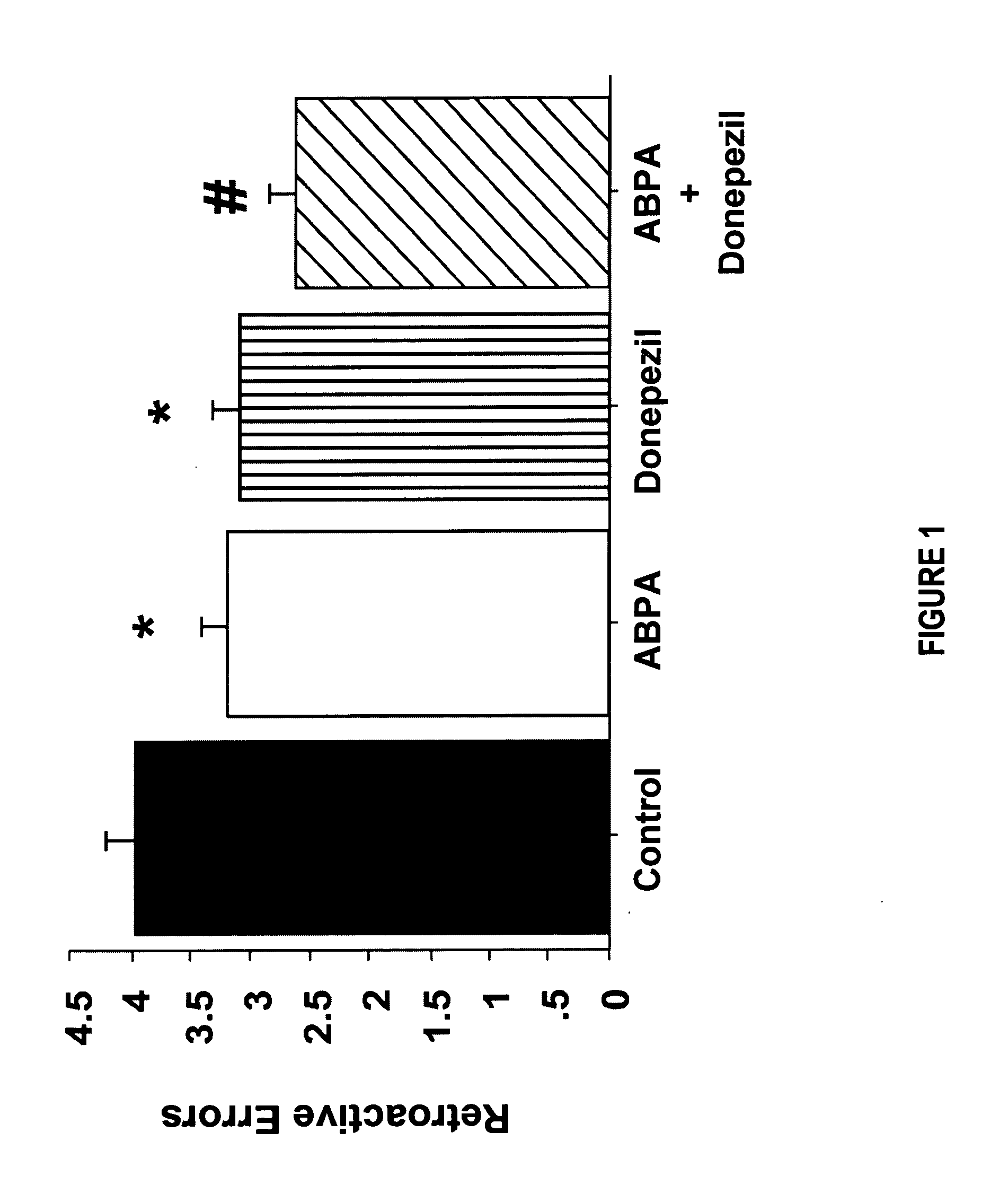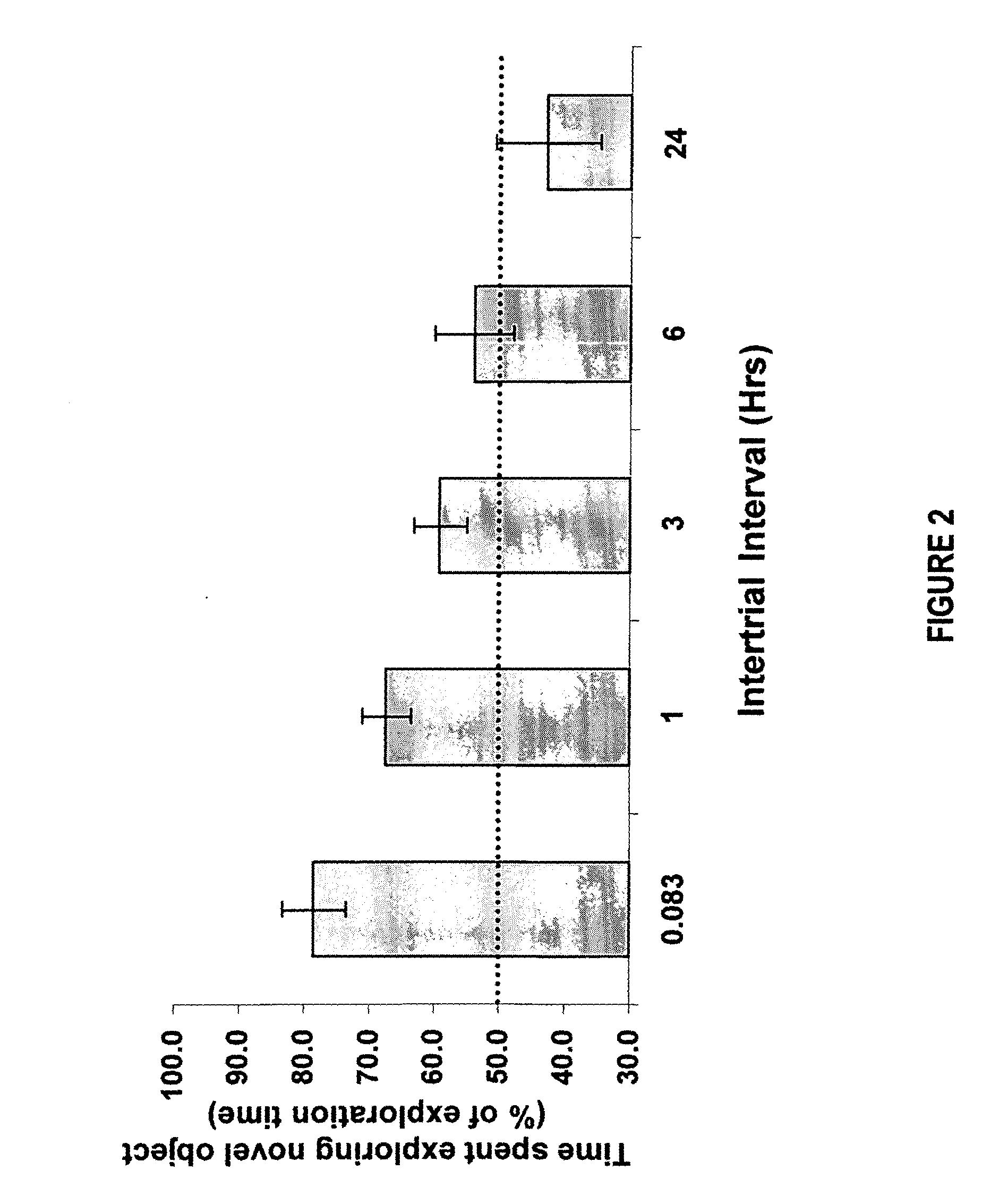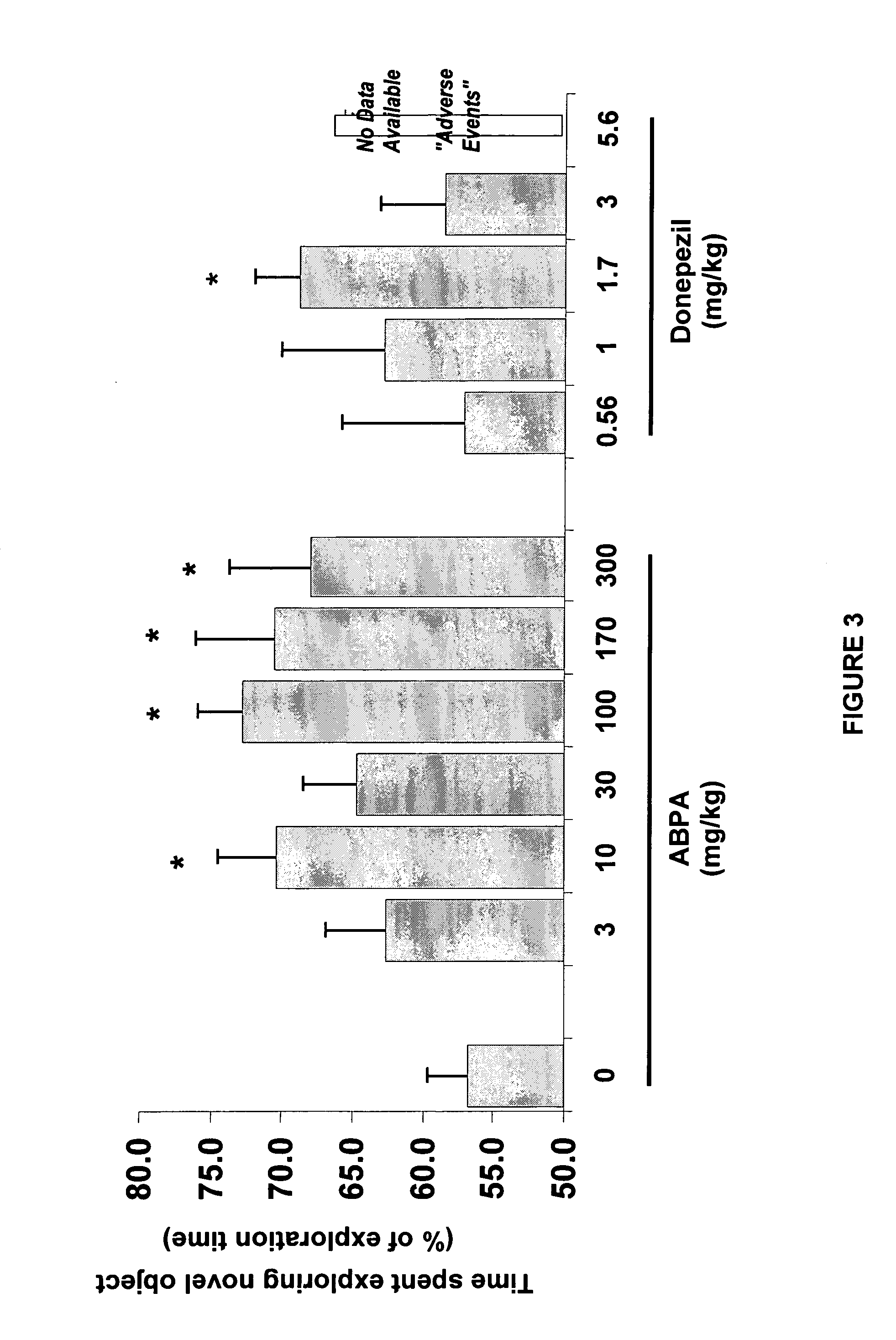Method for improving cognitive function by co-administration of a GABAB receptor antagonist and an acetylcholinesterase inhibitor
- Summary
- Abstract
- Description
- Claims
- Application Information
AI Technical Summary
Benefits of technology
Problems solved by technology
Method used
Image
Examples
example 1
[0089] This example shows the effect of administration of ABPA in combination with donepezil on the spatial memory of rats as measured in an 8 hour retention test on a twelve-arm radial maze.
[0090] Method
[0091] 12-arm maze test: Behavioral testing was conducted by an experimenter who was blind to drug treatment. 12 Long-Evans rats trained to use a win-shift strategy were given an information trial. During the information trial, 5 of the 12 arms of the 12 arm maze were blocked so that rats were not able to consume food from those blocked arms but could obtain food from each of the 7 open arms. After this session rats were moved to their home cage and placed back in the animal holding room. 8 hours later (memory test) rats were reintroduced into the maze with all arms open and only the previously blocked arms were baited. Memory for the 7 arms in the information session was demonstrated when the rat visits only the previously blocked arms on the memory test. A retroactive memory err...
example 2
[0095] This example shows the Object Recognition Task, an animal model used to assess the effects of compounds on memory.
[0096] Methods
[0097] The object recognition task: The object recognition task is a method to measure a specific form of episodic memory in rats and mice (Ennaceur and Delacour, 1988). It is based on rodents' natural preference for exploring novel objects over familiar objects. The experimental protocol is as follows:
[0098] The experiment takes place over a total of 4 days. Objects used for testing included square 60-mL clear glass tablet bottles with a black phenolic cap (“bottle”) or 2±2-inch high, 1¼-inch interior diameter aluminum electrical metal tubing conduit couplings (“conduit”). On the first 3 days, the rat was placed into a test box for 15 minutes of habituation. On the fourth day, two identical copies of the same object were arranged in the box, one in each of the near corners about ½ inch from the walls—two bottles for half of the rats, two conduits...
example 3
[0100] This example describes experiments to generate dose-effect curves for ABPA and donepezil in the Object Recognition Task.
[0101] To generate dose-effect curves for donepezil and ABPA, various doses of ABPA and donepezil were administered to rats 30 minutes prior to the information trial and compared to saline-treated controls (FIG. 3). Both drugs were administered by intraperitoneal (IP) injection. When tested at a delay of 6 hours, ABPA significantly enhanced performance when given at a wide variety of doses, i.e., 10, 100, 170, and 300 mg / kg with only 3 and 30 mg / kg showing no beneficial effect.
[0102] Donepezil also significantly improved performance in the object recognition task when administered at a dose of 1.7 mg / kg. Administration of doses higher than 1.7 mg / kg began to produce adverse side effects in the rat, a finding that parallels previous studies of AChEIs in general and donepezil in particular.
PUM
| Property | Measurement | Unit |
|---|---|---|
| Mass | aaaaa | aaaaa |
| Mass | aaaaa | aaaaa |
| Composition | aaaaa | aaaaa |
Abstract
Description
Claims
Application Information
 Login to View More
Login to View More - R&D
- Intellectual Property
- Life Sciences
- Materials
- Tech Scout
- Unparalleled Data Quality
- Higher Quality Content
- 60% Fewer Hallucinations
Browse by: Latest US Patents, China's latest patents, Technical Efficacy Thesaurus, Application Domain, Technology Topic, Popular Technical Reports.
© 2025 PatSnap. All rights reserved.Legal|Privacy policy|Modern Slavery Act Transparency Statement|Sitemap|About US| Contact US: help@patsnap.com



